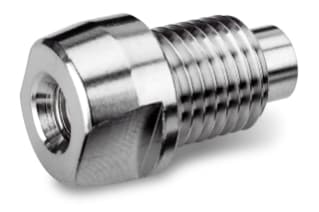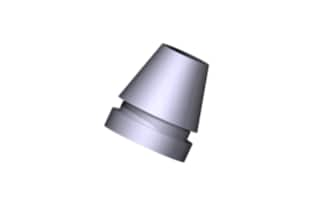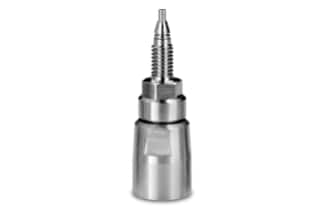
|
Chemistry |
C8 |
|
Separation Mode |
Reversed Phase |
|
Particle Substrate |
Silica |
|
pH Range Min |
2 pH |
|
pH Range Max |
8 pH |
|
Maximum Pressure |
18000 psi (1240 Bar) |
|
Endcapped |
Yes |
|
Silanol Activity |
Low |
|
Particle Shape |
Spherical |
|
Particle Size |
2.7 µm |
|
Endfitting Type |
Parker-style |
|
Pore Size |
90 Å |
|
Format |
VanGuard Cartridge |
|
Surface Area |
100 |
|
System |
UHPLC, UPLC |
|
Particle Technology |
Solid Core |
|
USP Classification |
L7 |
|
Inner Diameter |
2.1 mm |
|
Length |
5 mm |
|
Carbon Load |
4.5 % |
|
eCord |
Yes |
|
UNSPSC |
41115709 |
|
Brand |
CORTECS |
|
Product Type |
Guards |
|
Units per Package |
3 pk |



CORTECS C8 VanGuard Cartridge, 90Å, 2.7 µm, 2.1 mm X 5 mm, 3/pk
By eliminating particle pollution from the mobile phase stream, CORTECS C8 VanGuard Cartridges are used to increase analytical column lifetime and performance. All 2.1 mm and 3.0 mm I.D. CORTECS C8 analytical columns with 2.7 µm sorbent particles are well-protected by this cartridge.
Solid-core particles with a tri-functionally bound C8 Ligand are part of CORTECS UPLC C8 Columns. Compared to the C18 Ligand in the CORTECS UPLC Column Series, the C8 column is less hydrophobic since it contains a shorter alkyl chain. For the analysis of hydrophobic and very hydrophobic analytes, including fat-soluble vitamins, the CORTECS C8 Column's lower hydrophobicity results in shortened retention durations for numerous substances.
Vitamins like Vitamin E are classified as Fat Soluble Vitamins (FSVs), which are extremely hydrophobic substances. Reverse-phase liquid chromatography with C18 columns would require more time for analysis, increasing the cost of each experiment and analysis. However, C8 will be a far better choice because of their lower hydrophobicity, which cuts down on both analysis time and solvent expenses, which makes the addition of the CORTECS C8 VanGuard Cartridge into your setup significant to ensure the analytical column continues to perform at peak and has extended life span.
All of our lab equipment is made under controlled conditions and subjected to stringent quality assurance standards, ensuring that you only receive top-quality products from your lab. In order to meet the demands of every type of chromatographic analysis, we provide a variety of brands and versions. In addition to having the ability to contact a member of our international staff for assistance with any questions, issues, or general lab equipment guidance as needed, you will be able to shop for lab equipment from our website.
You might also be interested in the Cortecs C8 VanGuard Pre-column, 90Å, 1.6 µm, 2.1 mm X 5 mm, 3/pk. It has been created to increase the performance and lifespan of analytical columns by clearing particle contaminants from the mobile phase stream. All CORTECS UPLC C8 analytical columns with 1.6 µm sorbent particles are protected by this pre-column, which is optimized for that purpose.
What Causes My LC System To Constantly Shut Down?
To enhance system security, safeguard the columns and equipment, and assure system safety, HPLC pumps and systems come with an overpressure setting. The pump may stop working in order to safeguard the LC system if your system is operating at too low a setting or there is too much backpressure. Other factors could include the need for line cleaning or the removal of debris that has accumulated or crystallized and is obstructing or choking the system.